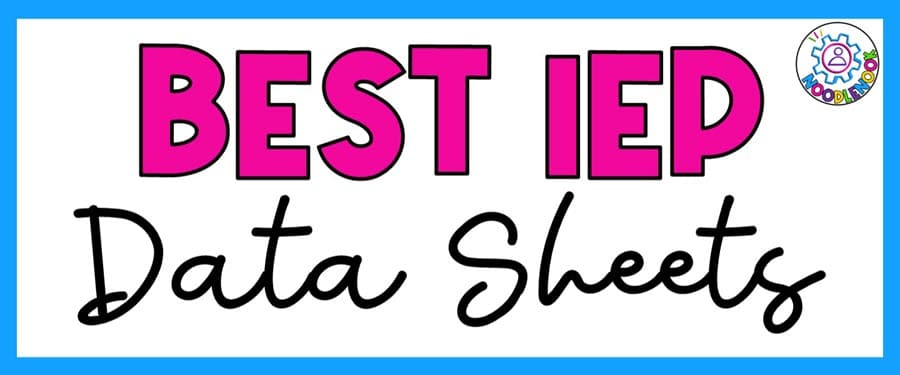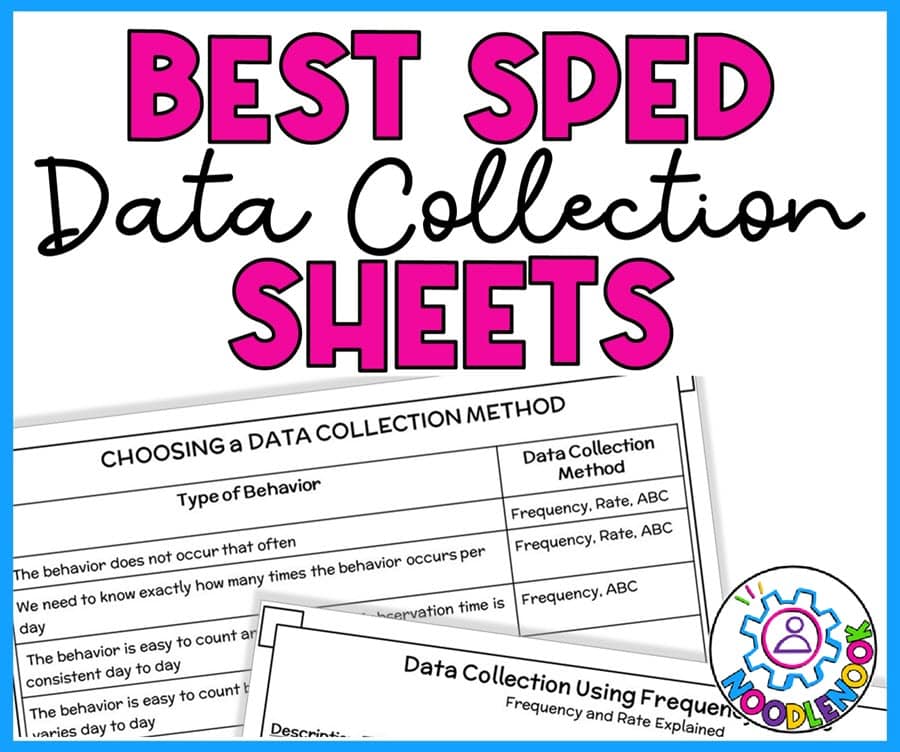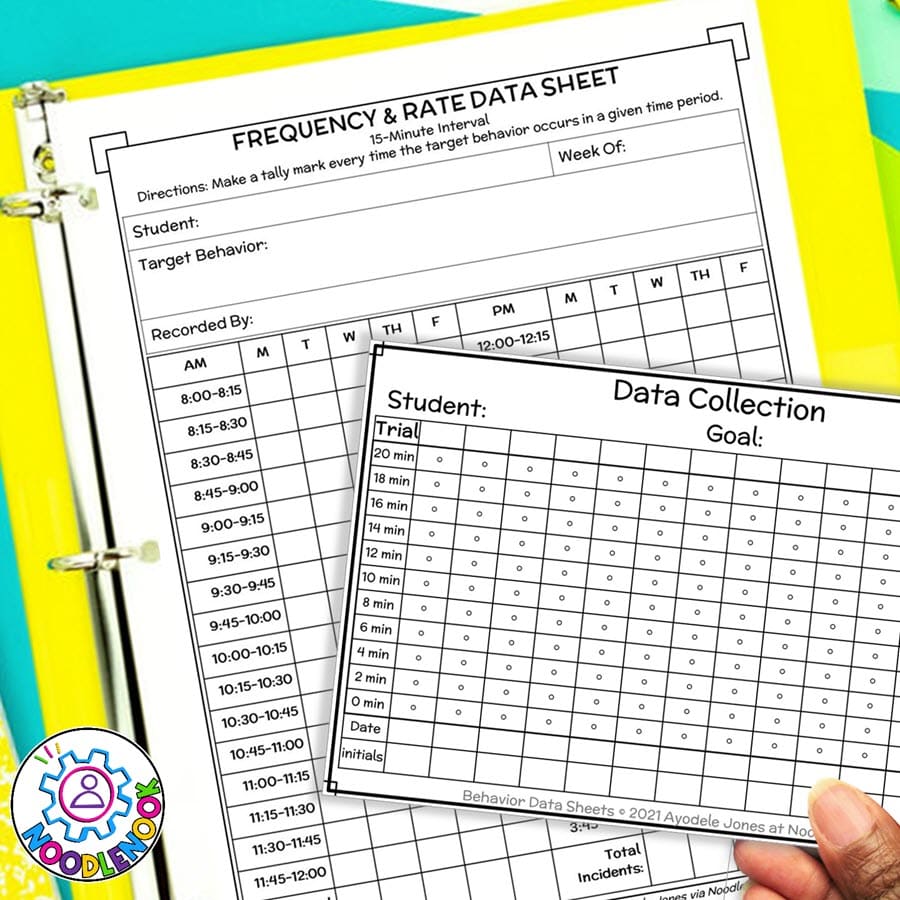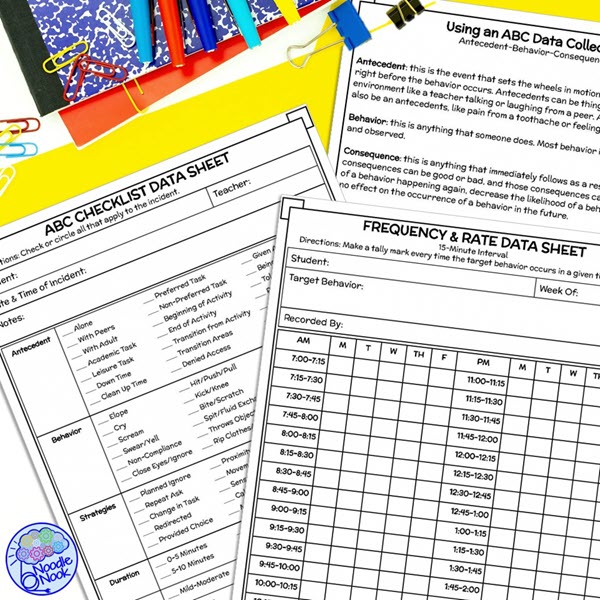New to special ed or feeling like your current system is a data disaster? Let’s be real, nobody wants to spend their entire day buried in paperwork. This blog post shares the three most important things to remember when it comes to progress monitoring for special education teachers. It’s time for you to ditch the overwhelm and find the best IEP data collection sheets that make your life easier (and more importantly, track all the great things happening in your classroom!). It’s time to find the right data sheet for different goals that help you walk into IEP meetings like a teacher boss!
1. Focus on Quality, Not Quantity
Forget the generic sheets with a million data points. We’re all about collecting meaningful data that directly reflects your student’s IEP goals. A well-designed sheet targeting a specific area (think reading fluency, not every book your student has ever read) with clear measurement is your best friend. This way, you can actually use the data to track progress and personalize instruction. Let’s be honest, special educators have enough on their plates. Drowning in a sea of generic data sheets with endless data points isn’t helpful for you or your students. Instead, let’s shift the focus to quality over quantity.
Here are 3 actionable strategies to help you achieve this:
✅ Align Data Collection with IEP Goals:
This might seem obvious, but it’s crucial. Before you grab a random data sheet, revisit your student’s IEP goals. What specific skills are you targeting? Most importantly, are you using the right data sheet to collect data specific to the IEP goal? As you start, identify the editable form best suited for monitoring IEP progress. This allows you to design a data sheet that tracks progress directly tied to the student’s IEP.
As an example, consider picking between a frequency or duration data sheet. With this goal, which would you choose?
IEP Goal: Improve multiplication fact recall for single-digit multiplication problems.
Measurable Objective 1: Student will correctly answer 80% of multiplication flashcards presented within a 2-minute time frame. (This objective focuses on accuracy within a specific timeframe)
Measurable Objective 2: Student will independently complete a worksheet with 10 single-digit multiplication problems with 70% accuracy or higher. (This objective focuses on accuracy with less emphasis on time)
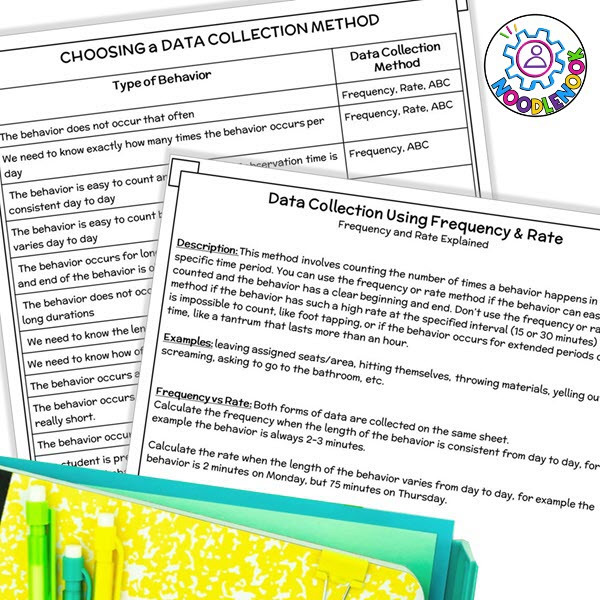
Even though these goals are inherently tracking the same skill, they are written in a way that requires a different data collection sheet. You may need to create separate data sheets for different aspects of the same IEP goal, which means knowing which does what is important! One sheet might track the number of correct answers on flashcards within a set time limit, while another sheet focuses on independent work with a set number of problems and a specific accuracy target. This allows you to see if the student struggles more with speed or with the actual math skills involved.
As you align data collection sheets for your student’s goals, know what kind of sheets you need for different goals. A decision guide, like the one pictured above, is super helpful in doing this right. When your sheets are explained and you have examples, you know you’re choosing the one.
✅ Less is More:
Resist the urge to cram everything onto one sheet. Focus on one or two key data points per objective. This keeps the data collection process manageable and allows you to gather more focused information.
For example:
Instead of tracking accuracy, fluency, and comprehension on a single reading passage, consider separate sheets for each area. This provides a clearer picture of where your student needs the most support.
You want to do less, not more, right? That means having pre-made data sheets designed specifically for different skills is a must. If you want the easy button for your data process, check out these data collection sheets and guides with clear instructions and easy-to-use formats. They will absolutely save you even more time and frustration.
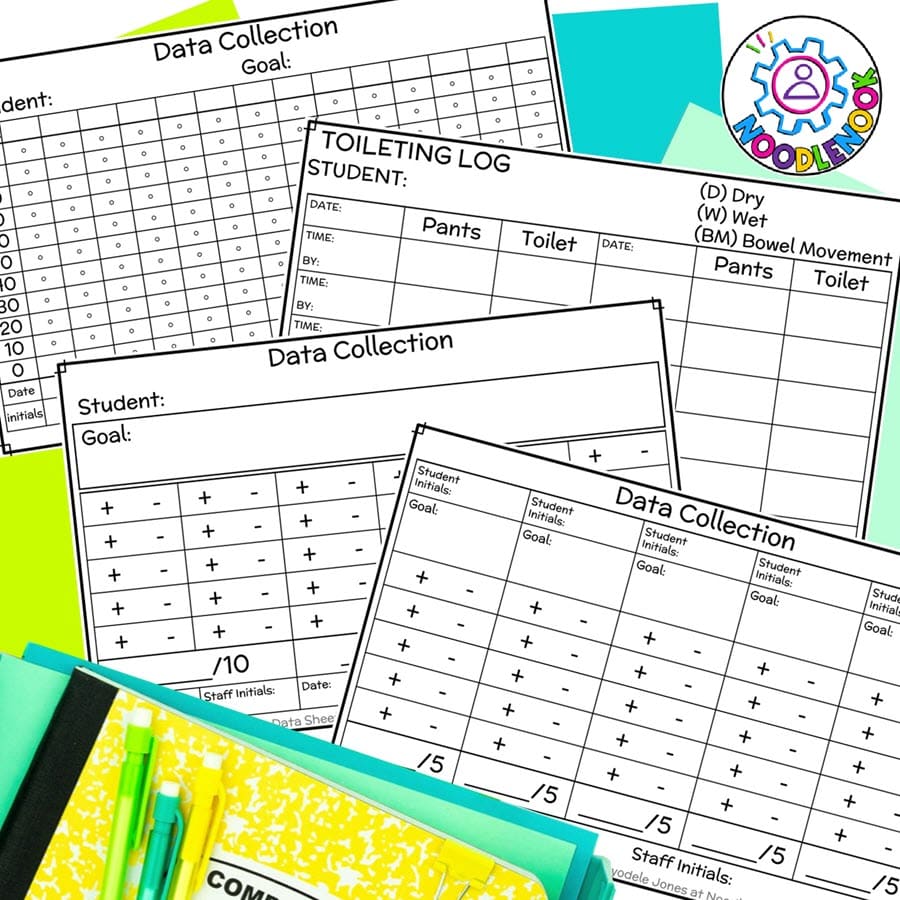
Check out these amazing, editable data sheets that can be customized to fit your specific needs! They offer a variety of options for tracking behavior and academics, all within a user-friendly format and guides. They are perfect for a new teacher (or vet) in a special education classroom.
✅ Simplicity: Less Fuss, More Focus
Clear, concise, and easy to use – that’s the golden rule for your data sheets. Think simple language, straightforward instructions, and layouts that are easy on the eyes. Avoid getting fancy with complicated charts or tiny fonts. This allows for quick and effortless data recording during class time, with minimal disruption to your teaching flow.
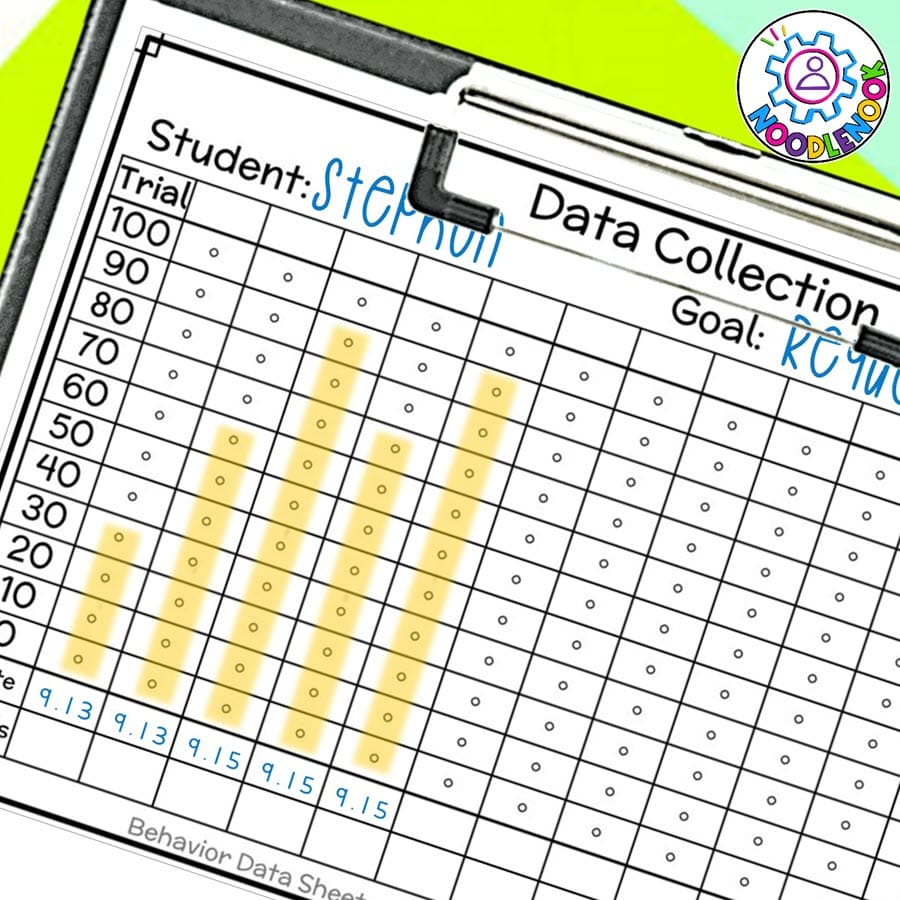
Bonus Tip: Make Your Students Do They Work! (For older students)
Involve your students in the data collection process! During independent work, have them help track their own progress using the data sheets. This builds a sense of ownership and engagement in learning.
Even if you don’t use their data, it helps them be mindful of new goals, personal progress, and accountability.
Plus, by focusing on clear and simple data sheets, you can make data collection less of a burdensome chore and more of a powerful tool for student progress.
2. Keep it Simple and Efficient
Data collection shouldn’t be extra work. Your sheets should be clear, concise, and allow for quick data recording during the school day. Editable forms (think Google Forms or Docs!) are your jam, allowing you to customize them to fit your student’s needs. Here’s why:
Bonus points if your students help collect some data during independent work! Really, it sounds silly, but it is a great way to set expectations and support students with executive functioning. Double WIN!
3. Data Informs Instruction, Not Replaces It
The data is there to be your guide, not your teacher. Use the information to see what’s working and what adjustments need to be made. All too often, special ed teachers read the IEP goal and make that the curriculum. It’s not (you read that right). The curriculum is the curriculum. The data is what we collect as students participate in the curriculum. That means you need simple and easy-to-access progress monitoring (think data clipboards or an IEP binder). The best data collection tools will help you identify areas for improvement and personalize instruction for each student’s unique needs.
Remember, there’s no one-size-fits-all approach. The key is to find the right data collection sheets that work for YOU and your students. So ditch the blank slates and generic forms, and free up your time to focus on what really matters: grading, paperwork, potty breaks, and, oh yeah, teaching.
P.S. Still drowning in behavior data collection?
Imagine this: you walk into the next IEP meeting with clear, concise data that paints a precise picture of your student’s progress. No more scrambling for scraps of information or relying on guesswork. You can confidently discuss baseline data, areas of strength and identify specific areas for improvement.
Stop wasting time creating your own data sheets from scratch or wrestling with generic forms that don’t quite fit the bill. These editable behavior data sheets are your secret weapon. They’re designed by special educators, for special educators, saving you precious time and frustration.
Here’s what you get:
Don’t settle for generic or time-consuming data collection methods. Invest in these amazing behavior data sheets and watch your stress levels plummet as your student’s progress soars. Click the link below to learn more and download your copy today!

